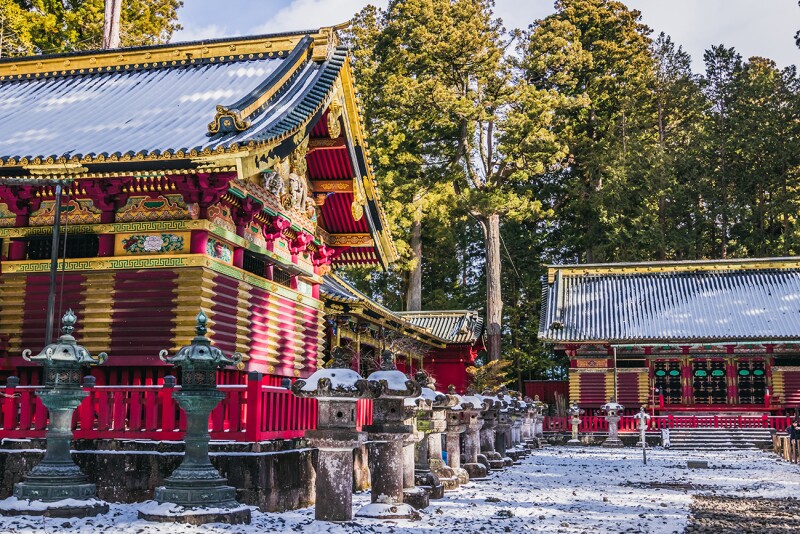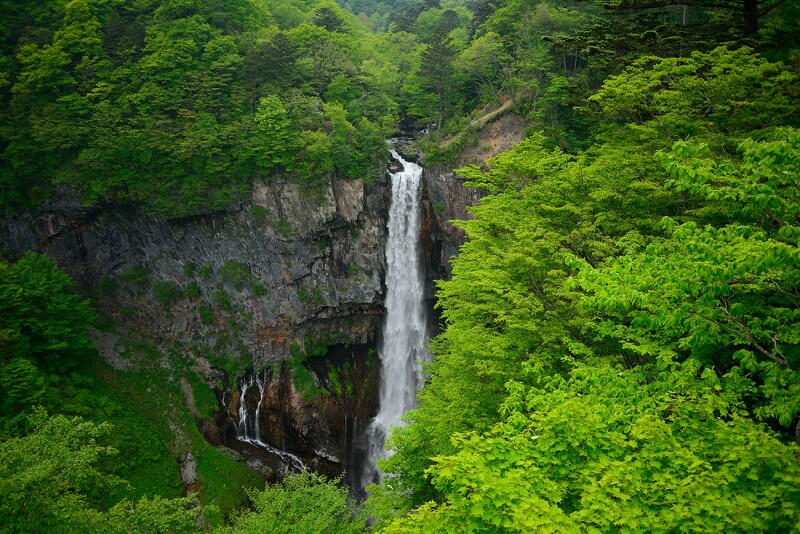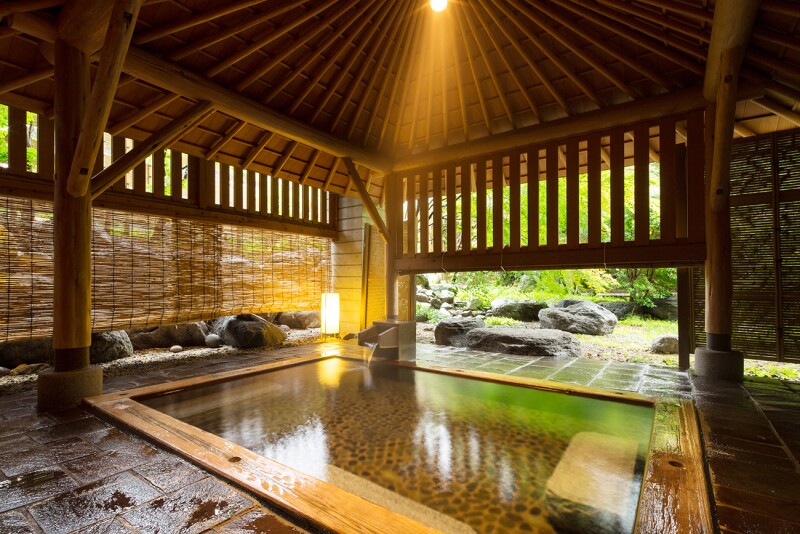Tokyo is known for many things: scrambling intersections, dizzying lights, back-alley bars, and more Michelin-starred restaurants than Paris, London, Rome, or, well, anywhere. The Japanese capital since 1868, it possesses an old-meets-new mashup unrivaled by—we’ll say it—any other city in the world. But one adjective you probably wouldn’t use to describe the city would be quiet. Or tranquil. Relaxing.
No, for those words—and for those feelings—you’d do best to head out of Tokyo and travel north to Nikko. Less than two hours by train from the capital in the Tochigi Prefecture, Nikko has long been a destination for nature-loving vacationers thanks to the region’s resemblance, at turns, to the Alps or Britain’s Lake District. Here, you’ll find some of the country’s highest waterfalls, lush national forests, and UNESCO-listed temples and shrines. Allow us to make a case for it as the ultimate weekend away from Tokyo.

Toshogu Shrine is considered one of the most ornate complexes in all of Japan.
Photo by Shutterstock
What to see
Nikko’s main attraction is the UNESCO-listed Toshogu, and rightfully so: As perhaps Japan’s most ornate shrine, it comprises 55 lavishly decorated buildings set in the forest, including the mausoleum of Tokugawa Ieyasu, known as one of the first three unifiers of Japan. Also notable? The complex’s mix of Shinto and Buddhist elements. During Japan’s Meiji period, the religions were separated from each other across the country but mostly allowed to remain at Toshogu because they are so intricately intertwined in the architectural details. Allow at least a half day to see all that Toshogu has to offer. (Note: Toshogu Shrine has been under renovation since 2007, but repairs generally affect only one or two of the site’s buildings at a time.)
Along with Iwakuni’s Kintaikyo and Saruhashi in Yamanashi Prefecture, Nikko’s Shinkyo Bridge is one of the country’s top-three designated bridges of beauty. Visit and it’s easy to see why: Situated at the entrance of the city’s shrines and temples, the lacquered vermilion footpath shines in all seasons, as does the river gurgling beneath it. You can walk across the 17th-century bridge for a small fee, but you’ll get the best shot of Shinkyo from the street.
According to Guinness World Records, the Cedar Avenue of Nikko (Japanese: 日光杉並木街道, or Nikko Sugi Namiki Kaido) is the longest tree-lined avenue in the world. The 22-mile path was once lined by 200,000 cedars planted in honor of Tokugawa Ieyasu. (The path leads to Nikko Tosho-gu, where he was posthumously enshrined.) Today, the number of surviving trees is smaller, but many of them—allowed to grow and flourish in the last few centuries—are nearly 100 feet tall.
Established in 1934, Nikko National Park was one of the country’s first national parks. A sprawling 443 square miles, it touches four prefectures—Tochigi, Gunma, Fukushima, and Niigata—and is considered one of the most beautiful parks in Japan. The Toshogu shrine complex is technically part of this park, and among its other attractions you’ll find the crashing Kegon Falls (one of Japan’s three highest waterfalls) and Lake Chuzenji (a scenic lake at the foot of Mount Nantai). The park is popular for camping, hiking, and skiing, and it is free to enter.

Kegon Falls is one of the three tallest waterfalls in Japan.
Photo by Shutterstock
Where to eat and drink
Gyoushintei is a worthy destination not just for its location—smack in the middle of a historical area called Nikko Fudoson—but also for its cuisine: The restaurant is the only one in Nikko to offer shojin ryori cuisine, developed centuries ago for Buddhist monks forbidden from eating food made with animal products. Expect fixed-price dinners and lunches that feature yuba, or tofu skin, which is a specialty in the region.
Tucked between buildings on Nikko’s main drag, Murmur Biiru Stand may not look like much, but it’s worth a pit stop for its in-house spicy brown ales and coffee stouts. The food menu is slim—mostly light bar snacks—but patrons are allowed to bring their own food. Our move: Grab some fresh-from-the-oven pastries from the Standard Bakers and carbo-load in the best possible way.
Nikko is known as a soba town, thanks in large part to its climate (conducive to growing buckwheat) and its mountains (which supply the crystal-clear water needed to make the noodles). As a result, there are more than 100 restaurants serving soba in the region. For the best, though, head just outside of the city by train to Imaichi, where you’ll find Hotokuan, located in Suginamikikoen Park at the end of the cedar avenue. Set in a traditional village house with tatami and shuttered, sliding doors, Hotokuan gets points for its ambience as well as its chewy noodles.
Wagyu beef is prized for its fat marbling and rich, buttery flavor, and in Tochigi, a select group of farmers has banded together to produce Tochigi Wagyu Beef from a type of cattle called “Japanese black.” One of the best places to taste the specialty is at Nikko Gourmands Wagyu (Japanese: 日光グルマンズ和牛), which sits above a stone-packed wall in a brown brick building as you head north to Kirifuri Falls. Fixed-price dinners start around $50 depending on the cut of meat you choose, and go up (and up . . .) from there. (Note: The restaurant is closed on Wednesdays.)

The outdoor onsen at Kai Nikko
Courtesy of Hoshino Resorts
Where to stay
Kai Nikko is a ryokan, or traditional Japanese inn, with 34 tatami-matted guest rooms. Around the property, guests are encouraged to wear yukata (Japanese robes) and thanks to their comfort, by the end of your stay, you’ll be eyeing similar versions in the hotel gift shop. One of the main draws at Kai Nikko is its onsen—with both indoor and outdoor bathing—fed by natural hot springs and separated by sex. (Unlike many bathhouses in Japan, the onsen at Kai Nikko is only for guests of the hotel.) Breakfast and dinner are included in nightly rates, and the hotel offers a 10-course kaiseki menu for the latter. Bonus points, too, for that little thing known as location, location, location: Kai Nikko overlooks Lake Chuzenji and is a 10-minute walk from Kegon Falls.
The oldest Western-style hotel in Japan, the Nikko Kanaya Hotel first welcomed guests in 1873. Since then, notable visitors have included Eleanor Roosevelt, Frank Lloyd Wright, and Albert Einstein. Today, the hotel retains many of its original charms (think: dark-timbered ceilings and a clubby reading lounge) and the rooms, though not contemporary, are large, clean, and comfortable. Other draws include the hotel’s near location to Nikko’s shrines and temples and its free shuttle to Tobu-nikko Station.
Also lakeside? The Ritz-Carlton, Nikko, is currently under construction but expected to be open in time for the 2020 Olympics in July with 94 guest rooms.
When to go
There’s arguably no bad season to be in Nikko, but Lake Chuzenji is best in summer, with boat tours and food stalls aplenty. The region’s most popular seasons are summer for walking and swimming and autumn, when the trees turn yellow and crimson.
Note: Japan has begun limiting large gatherings in the wake of the spread of coronavirus. Prior to visiting any site in the country, be sure to check the websites of relevant attractions.
>> Next: Temples, Tipping, and Train Rides: A Guide to Japan for First-Timers











